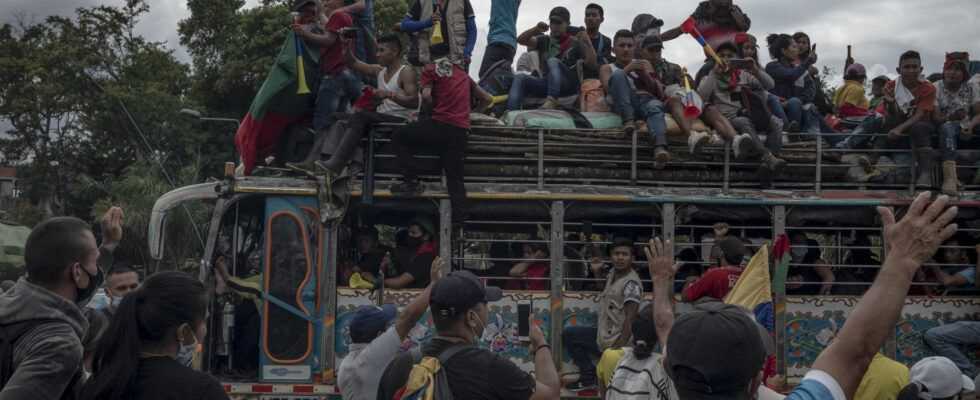FactualIn the third city of the country, torn by poverty, racism and drug trafficking, the natives joined in the social mobilization.
In Cali, Colombia’s third largest city, the large crossroads renamed “Puerto Resistencia” has been blocked by demonstrators since April 28. The Indians who came to lend a hand to the urban mobilization came to say goodbye on Wednesday, May 12. Cheerfully crowded into their multicolored buses, they were cheered by the crowd.
“We are not leaving, we are moving to continue the struggle in our territories, against the government of Ivan Duque and its bad reforms”, says Indian leader Ermes Pete Vivas. Mr. Duque withdrew, on May 2, the tax reform at the origin of social mobilization, without succeeding in defusing it. The virulence of police repression has aggravated the economic and social crisis. After Cali, it was the city of Popayan, even further south, which ignited.
“We want a better country, that’s all, says Marlen, 47, who belongs to the Nasa Indian community. The police can’t kill like that. You have to protest for her to stop. “ His neighbor GenaroIlamo specifies: “Me, I say that if the government recognizes its crimes and asks forgiveness, the people of Cali will return to their homes and us to our reserves.” But the youth is not in a conciliatory mood. Wepe Muellas, 23, also a Nasa from the village of Toribio, hears well “Resist until Duque leaves”. On his tattooed chest, the portrait of his indigenous ancestors rubs shoulders with Japanese manga.
The Indians of the department of Cauca and their organization, the Indigenous Regional Council of Cauca (CRIC) have experience in social struggle and police repression. “This time, we are not fighting to defend the rights of Indian peoples, specifies Ermes Pete. This time, we are in “minga” in solidarity with the entire Colombian people ”. Marlen explains: “The minga is the moment when a whole community comes together to carry out community work or to defend their rights. Participate who wants. CRIC takes care of the transport, each community the food, hammocks and everything else. Those who remained in the territories contribute by sending food. Every three days, there is a changeover: people who are tired return and others arrive. “
For the occasion, the Indians have set up their modest tents, made of black plastic sheeting, and their huge community pots on the campus of the University of Valle. They were more than 3,000.
You have 66.67% of this article to read. The rest is for subscribers only.
